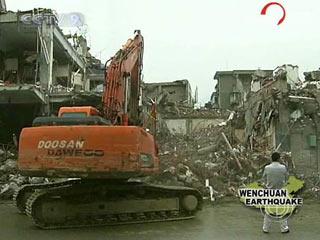China's Ministry of Housing and Urban-Rural Construction has stressed that infrastructure restoration is a priority in quake-zone reconstruction work.

China's Ministry of Housing and Urban-Rural Construction has stressed that infrastructure restoration is a priority in quake-zone reconstruction work.
In a circular on Tuesday, the ministry ordered governments at all levels to draw up construction plans by June 8th. In some quake-stricken areas, the reconstruction work has already started.
Dujiangyan is one of the cities hardest hit by the quake. It was once a well-known tourist destination in Sichuan province.
The quake damaged over 60 percent of the city's buildings, and left 75 percent of its population homeless.
Qu Jun, Head of Dujiangyan City Planning Bureau said "We are planning to clear the rubble from the city within two years. First, we will develop some new districts to allow the citizens to live and work in a peaceful and happy environment. Then we will reform these old districts."
Many architecture experts have joined the task force in the city. They say the preservation of cultural heritage sites and the protection of the environment are equally important as the reconstruction.
Compared with urban districts, rebuilding work in mountainous areas is more complicated. Experts say rebuilding sites should avoid occupying too much farmland.
Zhou Jian, Associate Dean of College Arch. & Urban Planning of Tongji University said "The rebuilding work should be based on the evaluation report from the authorities, whether we should build on the original sites or build on alternative sites."
The National Development and Reform Commission has set up a reconstruction team for the quake zone.
They plan to carry out the work in 2 stages. The first one will last 2 years, focusing mainly on reconstruction. The second will last 5 years from 2011 to 2015, and will focus primarily on development.
So far, the basic reconstruction work has been carried out very thoroughly.
(CCTV June 4, 2008)